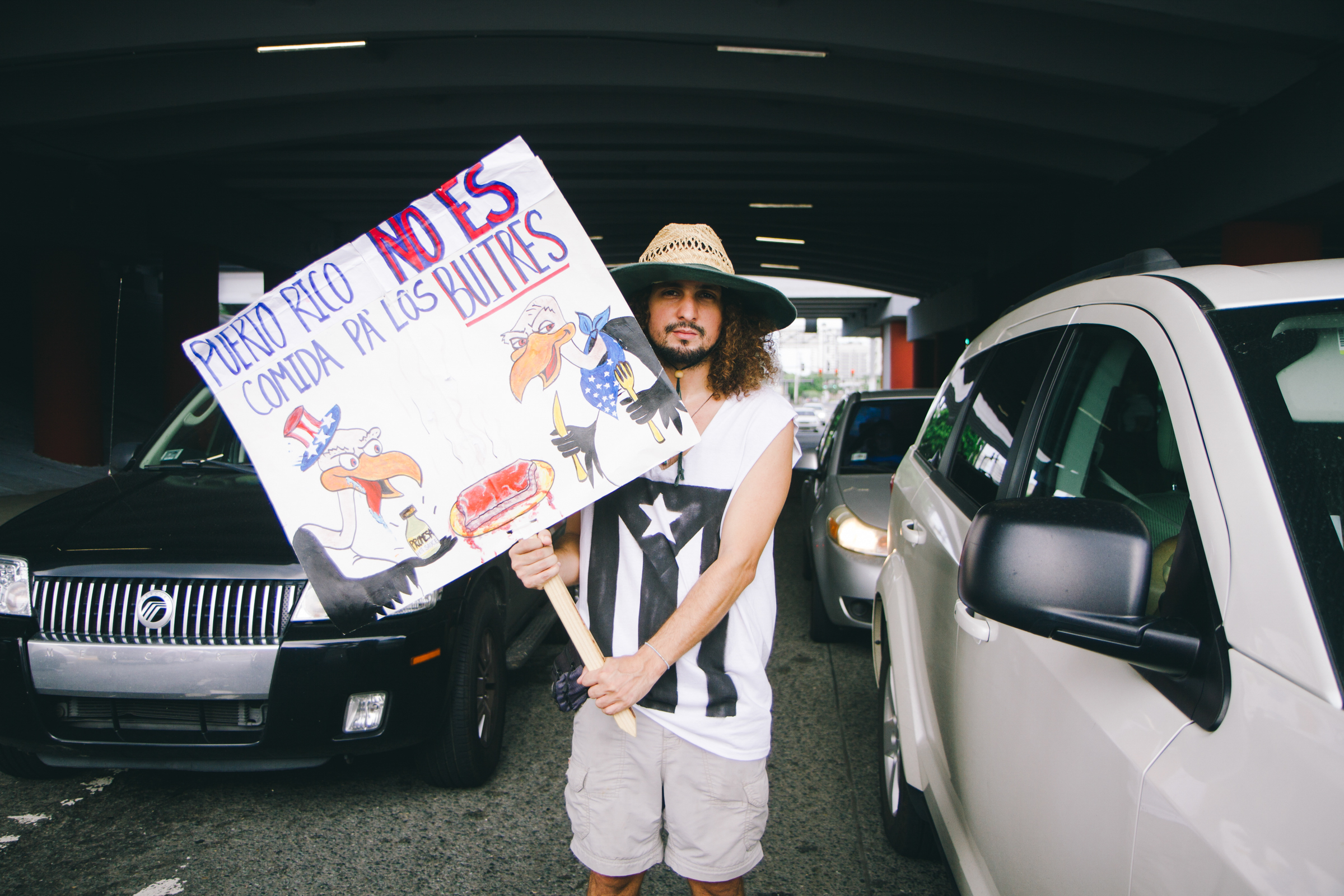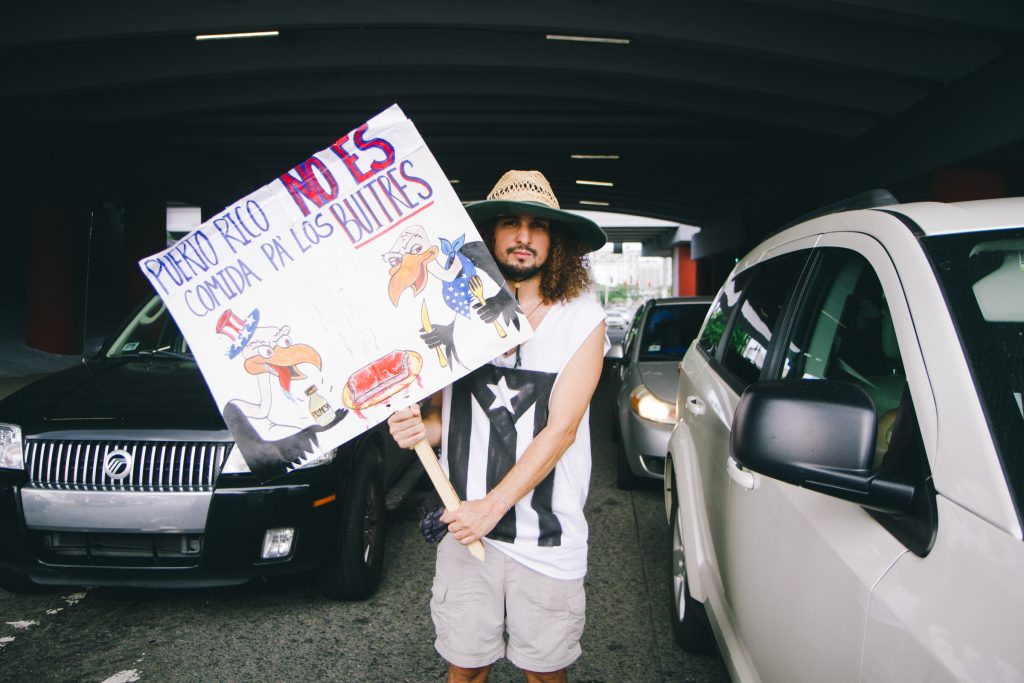On May 1 – a day known for labor organizing – Puerto Ricans, including René Pérez, aka Residente, awoke ready for a fight. Thousands flooded the streets to participate in the national strike to protest the austerity measures put in place by the government and the federally appointed fiscal oversight board – La Junta de Control Fiscal. Back in June 2016, the US Congress passed the Puerto Rico Oversight Management and Economic Stability (PROMESA) Act in order to address the island’s more than $70 billion debt. The bill authorized a seven-member control board – not elected by those who’ll most feel the effects – to make decisions, with the power to supersede the Puerto Rican government. With the junta approving Governor Ricardo Rosselló’s fiscal plan in March, Puerto Ricans are calling for an audit of the debt.
“The budget cuts proposed by La Junta aren’t to help Puerto Rican people,” Wilmarí De Jesús Álvarez, president of the Consejo General de Estudiantes del Recinto de Río Piedras, told Remezcla. “They’re to pay off a debt whose origins are unclear, a debt we’re not sure was taken on responsibly.”
Student protestors have been at the center of the protests, because the fiscal plan dramatically slashes the University of Puerto Rico’s operating budget. But it affects everyone on the island, including through higher traffic fines, sales tax applying to internet sales, and the restructuring of government-subsidized healthcare, meaning that patients have to pay more out of pocket. Puerto Rico’s protection from its creditors ends on May 1, meaning that Puerto Rico will either file for bankruptcy or have to pay its debt. “Either way, after May 1, the future of Puerto Ricans will likely be in the hands of a judge who will determine the amount of debt that needs to be [paid],” wrote Victor R. Martinez, policy analyst at Center for Puerto Rican Studies. “If this amount is more than expected, it could result in the implementation of more austerity measures.”
With all that’s on the line, Residente used his star power to encourage people to turn out to the paro nacional. On Sunday, he posted a video to Instagram specifically asking other artists to return to Puerto Rico for the marches. The rapper even canceled a show in Spain so that he could stand in solidarity with his fellow Puerto Ricans.
“This isn’t something that’s politically partisan,” he said, according to Metro PR. “This is for Puerto Ricans to tell the government that’s in power now – and the one that was in place before that did nothing – that we want the country to improve.” Residente, who kept his word, has further used his platform to live stream what’s occurring across the island.
According to El Nuevo Día, in the capital, the marches started from five places, including the Departamento del Trabajo, Recinto de Río Piedras de la Universidad de Puerto Rico, the Plaza Las Américas, Hiram Bithorn stadium, and Coliseo José Miguel Agrelot. Protesters plan to end the march at the Seaborne building, which houses the Junta de Supervisión Fiscal. As tensions run high, there’s some concern that things will turn violent. Before 1 p.m. ET, Twitter users accused police officers of trying to intimidate protesters and using tear gas to break up the crowds.
Here’s a look at how the protests have shaped up so far:
https://twitter.com/GustanDeportes/status/859084061368864768
As the paro nacional happens, Latino Rebels encourages calling senators and representatives on the Natural Resources subcommittee to put pressure on them. Check out the list here.




